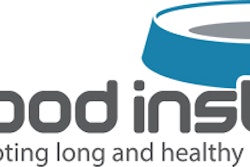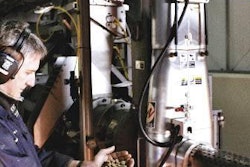"The world is flat," contends author Thomas Friedman (The World Is Flat, 2005). I think, by flat, he means the world has become a relatively level "playing field." Numerous technological advances and the lowering of political/trade barriers have made it possible to do business instantaneously with billions of people across the planet. Friedman's message to businesses: Deal with globalization or die.
Four reasons
The petfood industry is becoming a global industry, asserts Detlev Nisch of Wifrid Laurier University, for the following reasons:
Easier movement. It is getting easier, faster and cheaper to move information, money and people around the world. Thus, the cost of adopting a global strategy is lower.
Homogenized preferences. Pet owners are becoming similar in their petfood needs and wants. Increasingly, they are exposed to the same media messages (news, entertainment, sports, advertising).
Big technology investments. Petfood product development is more sophisticated. Manufacturing process research is also becoming more important.
Falling trade barriers. As barriers fall, petfood companies can use more efficient plants to serve groups of countries rather than build a plant in each country.
It makes sense
As the petfood industry becomes more global, it makes sense for petfood manufacturer associations worldwide to communicate regularly. It makes sense for them to help each other facilitate trade and to deal more effectively with regulatory, political and public relations issues.
For these reasons, Petfood Industry magazine hosted a trade association meeting and reception, in Chicago, Sunday, April 10, 2005. Attending were several petfood regulatory experts and official representatives of petfood manufacturer trade associations from:
Australia,
Brazil,
Japan and
The United States.
Here are their comments, along with information about their associations and market data from Euromonitor.
Advantages of harmonizing
One of the regulatory experts attending, was Avi Deshmukh, PhD, who is now with Nestle Purina PetCare Co. ([email protected]). He gave a presentation about globalizing petfood regulations. However, because "globalizing" can have a negative connotation, he now believes we should talk about "harmonizing" regulations.
Dr. Deshmukh provided the group with the following advantages of harmonizing petfood regulations:
Manufacturers will be able to print one label that will be accepted all over the world.
Consumers, veterinarians and other professionals will be able to interpret the information on the label uniformly, no matter where the product came from.
Regulatory authorities will find it easier to accept the label of the imported products.
Products will be nutritionally substantiated by uniform protocols or methods.
Information and label format will be standardized worldwide.
AustraliaPFIAA
John Morkunas, president of PFIAA, believes their top priority is to "continue to disassociate ourselves from government-enforced regulation. That is, we want to continue to self-regulate petfoods."
An exception is therapeutic or medicated petfoods, which are now regulated by the Australian Pesticides & Veterinary Medicines Authority. However, PFIAA is exploring the possibility of self-regulation in this area as well.
The Pet Food Industry Association of Australia (PFIAA) was established in 1972 to promote standards of excellence in the petfood industry in Australia. The PFIAA has developed a code of practice based on best practice and the adoption of responsible corporate standards relating to labeling, marketing and nutritional design and claims.
There's no national standard for wet or dry petfood. If it's imported, it has to comply with Australian Quarantine and Inspection Service (AQIS) import regulations and must be certified to come from disease-free animals that were inspected before and after slaughter.
For processed petfood made in Australia, some state regulations apply, otherwise the industry is largely self-regulated. Major manufacturers are members of PFIAA and have to comply with its code of conduct and AAFCO standards.
Present:John Morkunas([email protected]).
BrazilANFAL
ANFAL's current president, Antonio Miranda, confirmed that they want harmonization of petfood regulations. They are also working for "fair tax conditions" within Brazil. Now, the tax burden on petfood is 50%, compared to 7% for human foods. Another primary goal is to increase exports.
Mr. Miranda was happy that ANFAL recently "got the green light from our government" to prepare a report on developing an AAFCO-like organization. He thinks that without such an organization there will be more trade barriers.
According to the executive manager of ANFAL-PET, Jose Edson De Franca, Brazil has become a strong player in the international petfood market. He notes that, "Brazil is the world's largest exporter of beef and chicken. We have large amounts of animal protein, vegetables and grain." Also, 36% of Brazil's extrusion capacity is now idle.
ANFAL-PET, the Brazilian petfood manufacturers association, grew out of ANFAL.
ANFAL was founded in 1980 to support the interests of livestock feed manufacturers.
Present: Antonio Miranda, president of ANFAL-PET and CEO of Total Alimentos ([email protected]); Jose Edson De Franca, executive manager ANFAL-PET ([email protected]); Diana Miranda of Total; Anderson Duarte of Total; and Charles Ferreira of Total Export/Rush Direct.
JapanJPFMA
Mr. Takahara, president of JPFMA and Chairman of Unicharm PetCare, agreed that the petfood industry should increase efforts to globalize petfood regulations. Questions he had include:
How will BSE affect the US petfood industry?
Will AAFCO change the nutrient requirements for dogs and cats?
What regulations affect importing into the US? For example, what regulations are there relating to BSE, bird influenza, molds, Salmonella and so on?
The Japanese Dog Food Manufacturers Association was established in 1969. In 1975, the name was changed to the Japanese Pet Food Manufacturers Association. JPFMA consists of 57 companies which produce petfood or deal in petfood. The membership's share of the petfood market is over 90%. JPFMA aims for the safety and quality of petfood, pet owners' good life with pets and pets' good health.
Present: Toshio Takahara ([email protected]) and Yasushi Takeda, R&D group, UniCharm ([email protected]).
The United StatesAFIA
Richard Sellers, VP of Feed Control and Nutrition at AFIA, believes that, "So many of the labeling regulations in the US, and elsewhere in the world, have no basis in science. However, regulations dealing with nutritional adequacy and the safety of petfood ingredients, tend to have more basis in science."
Mr. Sellers believes that there are some items that could easily be harmonized and some that would be more difficult. "Certainly, for the good of the world pet population, it would be best if we had a global standard to prove nutritional adequacy. That's the most important issue to consider. The way to do that, if you want to have some teeth, is to be recognized by the World Trade Organization (WTO). Then you have an appeal body."
Mr. Sellers contended that one obstacle to harmonization is the lack of a National Feed Composition Database for the US. He pointed out that the US is the only developed country in the world without one.
The American Feed Industry Association (AFIA) is devoted to providing strong leadership representing the business, legislative and regulatory interests of the animal feed and petfood industries and their suppliers. AFIA and its Action Committees work consistently with Congress and various federal and state agencies to ensure the feed industry's voice is heard on important policy matters.
Present: Richard Sellers ([email protected]).
The United StatesPFI
Steven Payne, VP of Communications for PFI, expressed that the biggest opportunity for their association is international trade expansion. He noted that PFI is spending resources and time to expand export market opportunities for its members.
Since 1958, the Pet Food Institute (PFI) has been the voice of US petfood manufacturers. PFI is the industry's public education and media relations resource, representative before the US Congress and state and federal agencies, organizer of seminars and educational programs and liaison with other organizations. PFI represents the manufacturers of 97% of all dog and cat food produced in the United States.
Present: Steve Payne ([email protected]).
Harmonize my way
Another regulatory expert attending was David Dzanis, DVM, PhD of Dzanis Consulting & Collaborations ([email protected]). For several years, Dr. Dzanis was the petfood expert with the US Food and Drug Administration, where he served on the AAFCO Pet Food Committee and chaired the AAFCO Canine and Feline Nutrition Expert Subcommittees.
"Working with FDA," Dr. Dzanis said, "I can tell you they welcome harmonization as long as you follow everything they do. I don't think they're alone in that. I know I was involved with equivalence negotiations with the EU in the early 1990s. The Europeans were just as dogmatic about their principles as the Americans were about theirs. Each country thinks it is right and, although politics are part of it, scientists can also disagree.
"Certainly I'm in favor of harmonization, but I know it is difficult. My practice deals with AAFCO and individual states. AAFCO has been around since 1909 and we still haven't harmonized 50 states, or even come close."
Nutritional adequacy harmony
Joep Lupgens, DVM, "A Consult with the flexvet," is based in Holland and so works extensively with EU petfood regulations ([email protected]). He observed that some think education is the answer to harmonizing. However, he said, "you have to have common sense before you can harmonize. The goal has to be achievable. It's only possible when we are scientifically grounded. We have to work in the areas where we can have science-based benchmarks.
"Now, the EU allows ethical and societal factors to be enough to establish regulations. That is very different from using scientific factors. An example of using societal factors, is the EU requirement to GMO-label petfoods. As long as we have these sorts of drivers towards legislation, we cannot harmonize in these areas. We have to set realistic goals to focus on, such as harmonizing how we substantiate nutritional adequacy."
Coming in 2006
Petfood Industry magazine plans to host a trade association meeting and reception annually. In 2006, it will be held on April 2, 2006again, just before Petfood Forum. In 2007, it will be held April 15, 2007.
Keep up or be trampled
Thomas Friedman believes the world has become "flat" due to connections driven primarily by desktop freelancers and innovative startups all over the worldespecially in India and China. He believes this new world is exciting, but he warns: Those who do not keep up with the rapid changes, will be trampled.
















